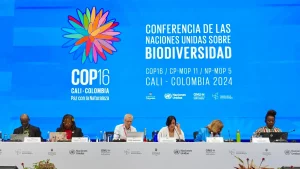COP16, the Convention on Biological Diversity’s conference, marked a most important milestone for global biodiversity conservation in Cali, Colombia. Representatives from 196 countries gathered to tackle pressing challenges in biodiversity protection. The conference was pivotal for biodiversity action, building on the Kunming-Montreal Global Biodiversity Framework (GBF) set during COP 15. This year’s theme “Building Resilience for Biodiversity and Climate,” set out ambitious targets to halt biodiversity loss, increase conservation efforts and ramp up funding for nature restoration. Despite some impressive wins, there were sadly significant setbacks. For instance, from the 119 nations that participated in COP 16 only 44 parties have submitted at least one National Biodiversity Strategy and ActioPlans (NBSAP).
https://www.tunley-environmental.com/en/insights/cop-16-key-outcomes-and-next-steps
Agreement on Ecologically or Biologically Significant Marine Areas (EBSAs)
COP16 reached a breakthrough agreement on Ecologically or Biologically Significant Marine Areas (EBSAs) through eight years of complex negotiations. There are 338 recognised EBSAs worldwide today, stretching from polar to equatorial regions and from coastal waters to deep oceans. These areas provide vital habitats for marine species, food sources and ecological services for humanity. The agreement created new mechanisms to identify and modify these significant marine zones. Nonetheless, we are still far from our goal to protect 30% of the ocean by 2030. With only 8.4% of the ocean currently as Marine Protected Areas (MPA’s).


